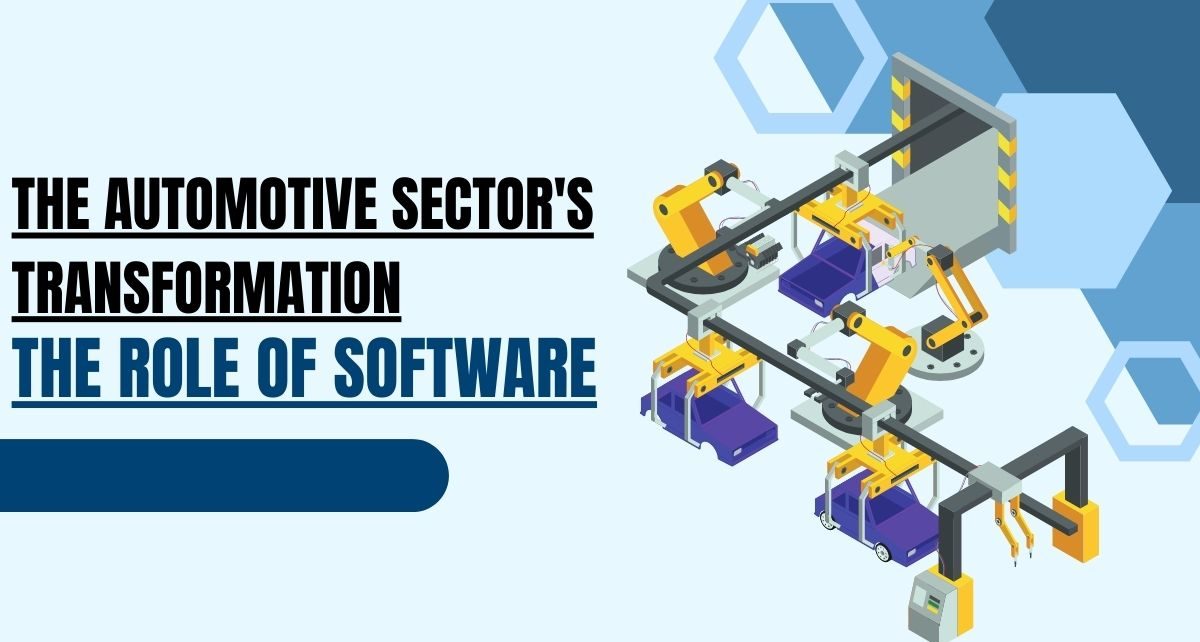The automotive sector is transforming, with software at the forefront. The development of autonomous driving, which has the potential to improve traffic safety and prevent collisions even at high speeds, is accelerating thanks to technological advances driven by software.
The automotive industry has recently seen a dramatic revolution, focusing more on software-defined vehicles than conventional mechanical engineering. This transformation has been impacted by some reasons, including the complexity of modern cars and the rising significance of connectivity and automation.
The Importance of Software in the Automotive Sector
Electric vehicles have significantly increased in popularity as a sustainable and affordable alternative as public awareness of the harmful environmental effects of conventional gasoline-powered vehicles rises.
The market for electric vehicles, which is anticipated to be worth USD 194.14 billion in 2021, will increase at a compound annual growth rate (CAGR) of 19.1% to reach USD 936.1 billion by 2030.
Understanding that these futuristic cars provide more than just svelte looks and environmental friendliness is important. Electric car operations are fundamentally governed by software regulating factors like battery life, range, and overall performance.
This blog post explores the possible effect and revolutionary power of the automotive industry’s move toward a software-driven future.
Applications of Software in the Automotive Industry
- Infotainment
Modern vehicles now come equipped with infotainment systems as standard equipment. Different applications are used on these software-driven systems to amuse and inform both drivers and passengers. These systems include features like GPS navigation, music players, and voice-activated controls.
- Assisted-Driving Technologies
Modern cars are increasingly becoming standard with driver-assistance features. These computer-based devices keep an eye on the environment around the car and give the driver useful information to make driving safer. Lane departure warning systems, collision avoidance systems, and parking assist systems are a few examples of driver aid systems.
- Manufacturing
Assembly lines and other equipment are used in an intricate web during the manufacture of automobiles. Software is essential for managing this process and ensuring each component is assembled accurately and following strict standards. Software and automated systems work together to increase productivity and guarantee quality.
- Engineering Design
The automotive industry has been significantly impacted by software, notably in design and engineering. Engineers can generate incredibly accurate 3D models of automotive parts using cutting-edge techniques like computer-aided design (CAD) and computer-aided engineering (CAE), which allow them to mimic behaviour under various conditions.
Automotive Software Types
1. Software for Digital Design and Simulation
To create and test automotive systems before actual construction, digital design, and simulation software are increasingly employed. This lowers the cost of prototyping while allowing automakers to develop and improve designs more quickly than ever.
Simulation software is now an essential component of the automobile design process and is critical in testing vehicle aerodynamics and crashworthiness.
2. Software for Connected Vehicles
Connect vehicle software is essential to developing connected automobiles for features like remote diagnostics, over-the-air software updates, and real-time traffic data gathering to function.
Thanks to the expanding usage of artificial intelligence (AI), these software solutions make it possible for in-car entertainment systems to become more advanced and customized.
3. Software for Autonomous Driving
Autonomous driving software is one of the most sophisticated and comprehensive types of software employed in the modern car industry. These cars rely on sensors, cameras, and machine-learning algorithms for safe road navigation. The software running these systems must constantly change and advance to keep up with new technology.
4. Engine Control Software
Modern vehicle engines and transmission systems are now monitored for effectiveness and performance using powertrain software. This program improves driving comfort, lowers pollutants, and optimizes fuel efficiency.
The importance of powertrain software has increased significantly in light of the popularity of electric and hybrid vehicles. Electric automobiles mainly rely on software for battery performance and range management, necessitating careful calibration for best results.
5. Software for Manufacturing and Assembly
Software for manufacturing and assembly is essential for organizing the manufacture of modern vehicles. These software programs save waste, improve production efficiency, and provide reliable quality control.
Manufacturing and assembly software has advanced significantly with the introduction of Industry 4.0 and the Internet of Things, introducing real-time monitoring and analytics capabilities that swiftly identify and fix production difficulties.
Conclusion
One of the most significant technological breakthroughs of our time is predicted to be the software-driven future of the automotive sector. Automotive software development services are playing a crucial role in enabling this revolution. Electric vehicles, connected automobiles, and autonomous driving are revolutionizing transportation as we know it while increasing innovation and cutting pollution.
Although there are still issues like infrastructural and regulatory restrictions, the future of the automotive sector seems promising. Software is anticipated to be essential in this transformational process.




